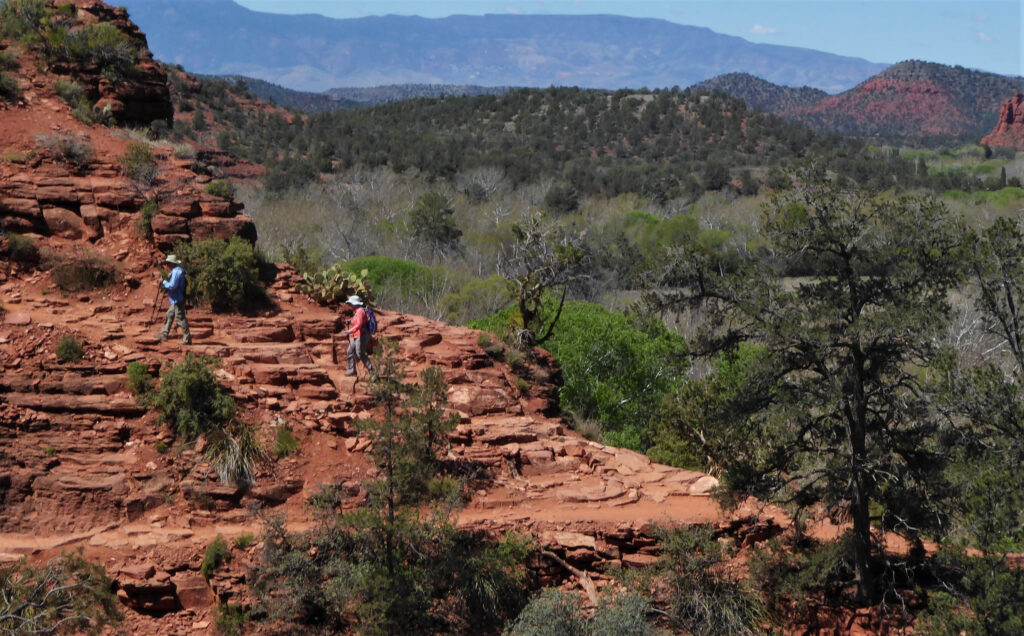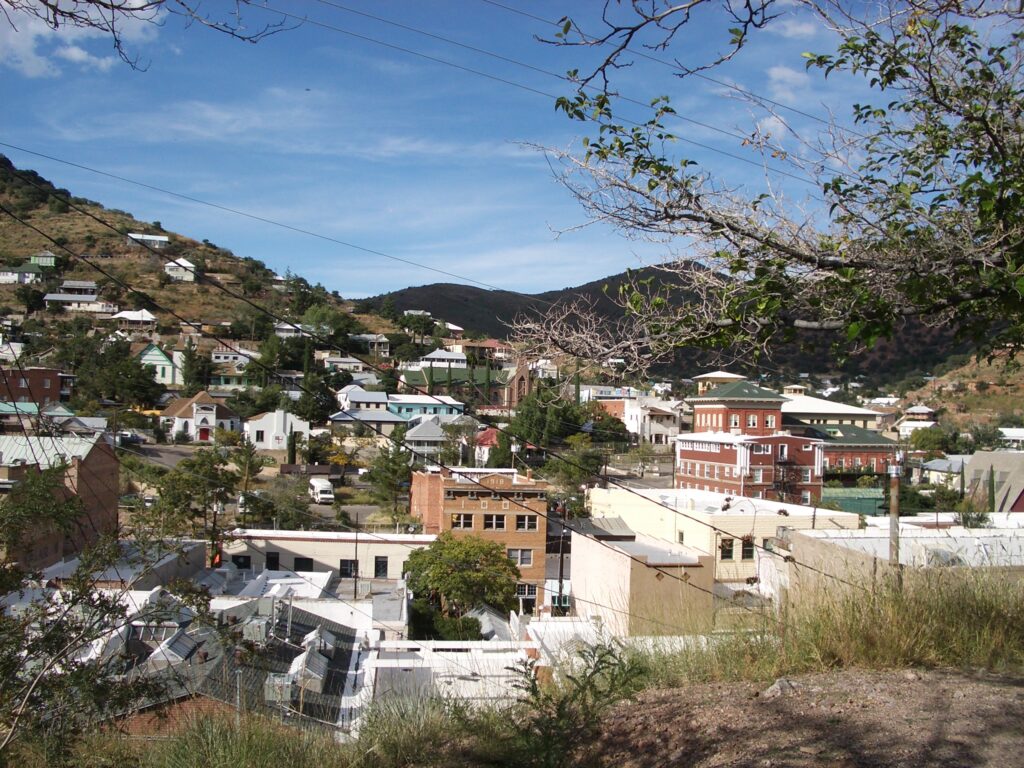
Sedona Arizona, hiking above Oak Creek
Cattle and Copper, by “Wild” Bill Hartley
The owner of Rancho Mirago advised us against parking on the grass. This was nothing to do with a gardener’s pride, since the grass was brown and withered by the high temperatures and lack of rainfall. He was making a point about wildfires and explained that anything outside the firebreak, which surrounded his ranch house, was likely to be incinerated. There have been four such fires already this year, the last of which consumed 10,000 acres of Southern Arizona.
Rancho Mirago is in Cochise County: miles of harsh but beautiful prairie, desert and mountains, much of it open range. Once off the tarmac and onto the dirt roads, then cattle take precedence. The Southern Arizona Cattle Growers Association likes to remind visitors of its role in the food chain. A sign outside the entrance to one ranch read, ‘this ranch feeds 1600 American families’.
Cattle ranching is a tough business. The University of Arizona cites drought as one of the major problems and believes that small family run operations are the most vulnerable. Some of these small ranchers need other jobs to augment their income. Rancho Mirago provides accommodation. Perhaps the most eccentric example was Winn Bundy (1930-2020). Several miles up an isolated dirt road, she ran a bookshop at the Singing Wind Ranch.
Apart from the climate and wildfires, another problem is rustling. A 2021 report in the Arizona Independent suggested that around 3000 head have gone missing in the past few years. There are claims of links between cattle rustling and money laundering by drug traffickers.
Leaving the open range and heading south towards the border with Mexico, there are signs of what was once the other main economic activity. Some of the hills are a red ochre colour, which hints at the presence of copper ore. The road south crosses a high plateau where the best known town, Tombstone, stands at 4,500 feet above sea level. Driving through the Mule Mountains towards Bisbee, the county seat, the road actually descends on the approach to a place which advertises itself as a ‘mile high city’.
Bisbee is different to other small towns in the state. Elsewhere in Arizona the American flag is ubiquitous. But in Bisbee, the most prominent flag is that of CND. Close to the town, the hills have the characteristic red soil and it was here in 1880 that the Phelps-Dodge Mining Company established its operations, giving Bisbee a huge economic boost. Mining at the Copper Queen continued up to 1920. The economic rise and decline of Bisbee is reflected in its buildings. Between the late 19th and early 20th centuries this small town acquired a sense of permanence and prosperity, reflected in the grand architecture of its banks and other public buildings. Bisbee even had its own stock exchange. When deep mining went so did the town’s main source of income and the fine commercial buildings now either stand empty, or have found other uses. The onetime stock exchange building is a bar.
Mining of a sort continued up to the 1970s due to the efforts of Harrison M Lavender (1890-1952), vice president of Phelps-Dodge, who in 1950 conceived the idea of digging out the previously unprofitable low grade ore. His memorial is the 900 feet deep Lavender Pit which closed in 1974: a massive hole in the ground which has become a tourist attraction. Millions of tons of waste from the pit were dumped near the town.
There is also a mining museum but a more obvious example of Bisbee’s history can be found in the town centre, where there is an abandoned mine portal, with a sign warning people not to enter. Given its location at a road junction and the steep gradients of the bare eroded hills above, it probably functions as a drain during periods of heavy rain.
With the decline in mining activity, Bisbee, as the flag evidence suggests, has acquired a different population. Some describe it as a hippie mountain town. Bisbee became an offshoot of the counter culture as artists and hippies were priced out of locations in California due to gentrification. Down the years, the newcomers have literally changed the face of the town. This is a place well covered by murals; good, bad and incomprehensible. Any abandoned building or wall space has become a canvas. Given the gradients, buildings are intersected with steep stairways to reach upper levels of the town and these also provide a canvas.
Whilst Main Street is given over to antique shops and restaurants, alternative Bisbee is best discovered by walking up nearby Brewery Gulch. Here, the first shop is quite conventional. It sells fresh pressed olive oil. Next door, however, they are offering séances and beyond that a magic show, followed by an establishment dedicated to axe throwing. The first bar on Brewery Gulch resembles a 1970s student union. Overlooking this eclectic mix of premises is the most bizarre building in town; the Pythian Castle, surmounted by a huge clock tower which seems to press down on the building below. It was opened in 1904 by the Knights of Pythias, a fraternal organisation or secret society, depending upon which source is chosen. There are period photographs of portly middle aged men dressed up in medieval style costumes. The Knights left the building long ago and although there are said to be plans for a new use, it currently stands empty and forlorn.
Beyond the old town, Bisbee’s dwellings rise precariously up the sides of Tombstone Canyon. These were the original miner’s houses, since augmented by newer homes. They range from the abandoned and collapsing to some well kept and attractive properties. Overall, there is a sense of a Swiss mountain village transplanted to Southern Arizona.
Unfortunately, despite its quirky charm and mountain location, Bisbee’s population is dwindling. When the Copper Queen was in operation, 35000 people lived here. The last census revealed that there are now fewer than 5000. In Bisbee, there are few good jobs to be had. The town depends on tourism and much of this is of the day tripper variety, since the place is easily reached from Tucson. Tourism keeps the place going but to survive and prosper, it requires more than quirky charm.

Bisbee, Arizona










